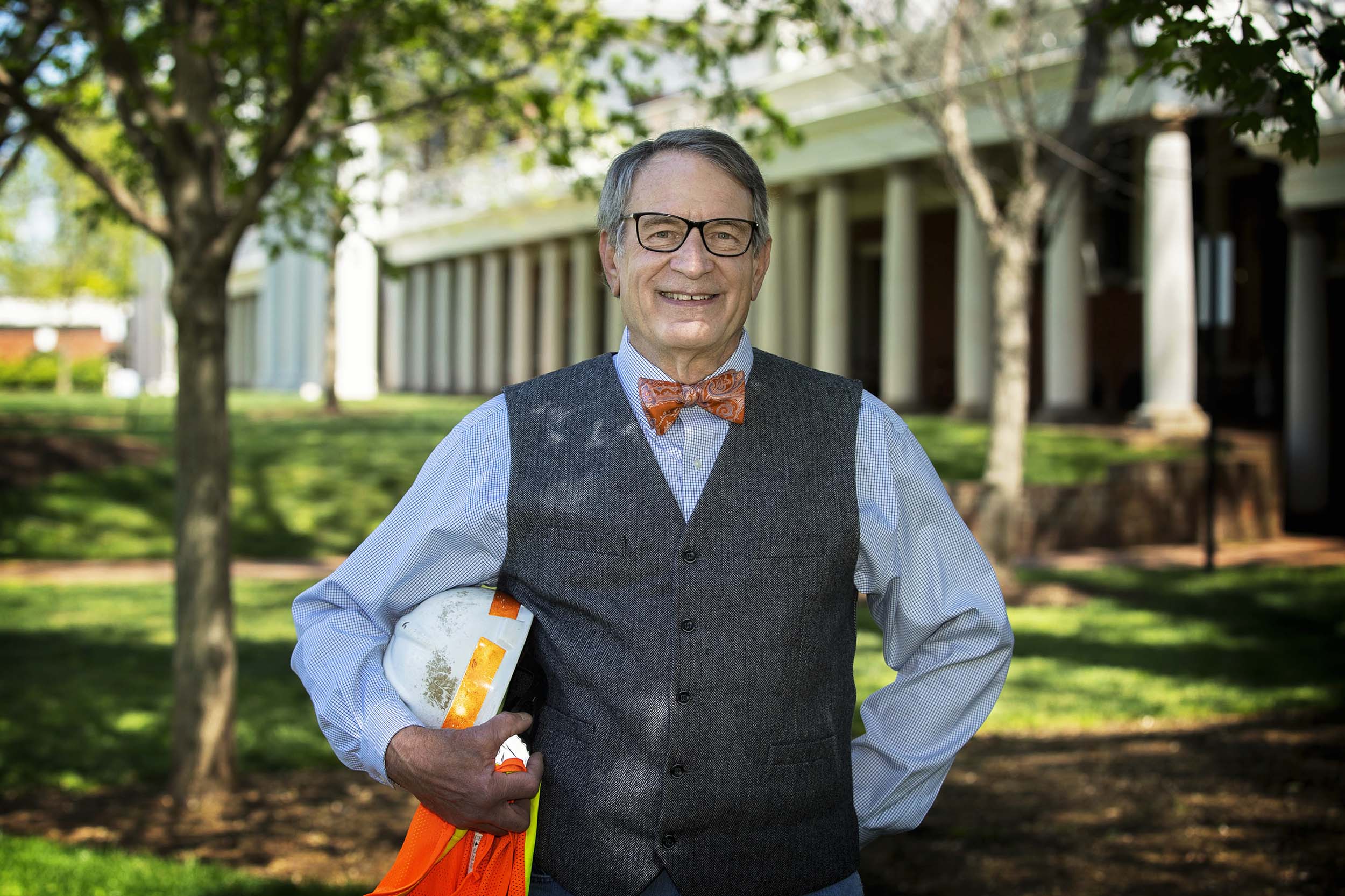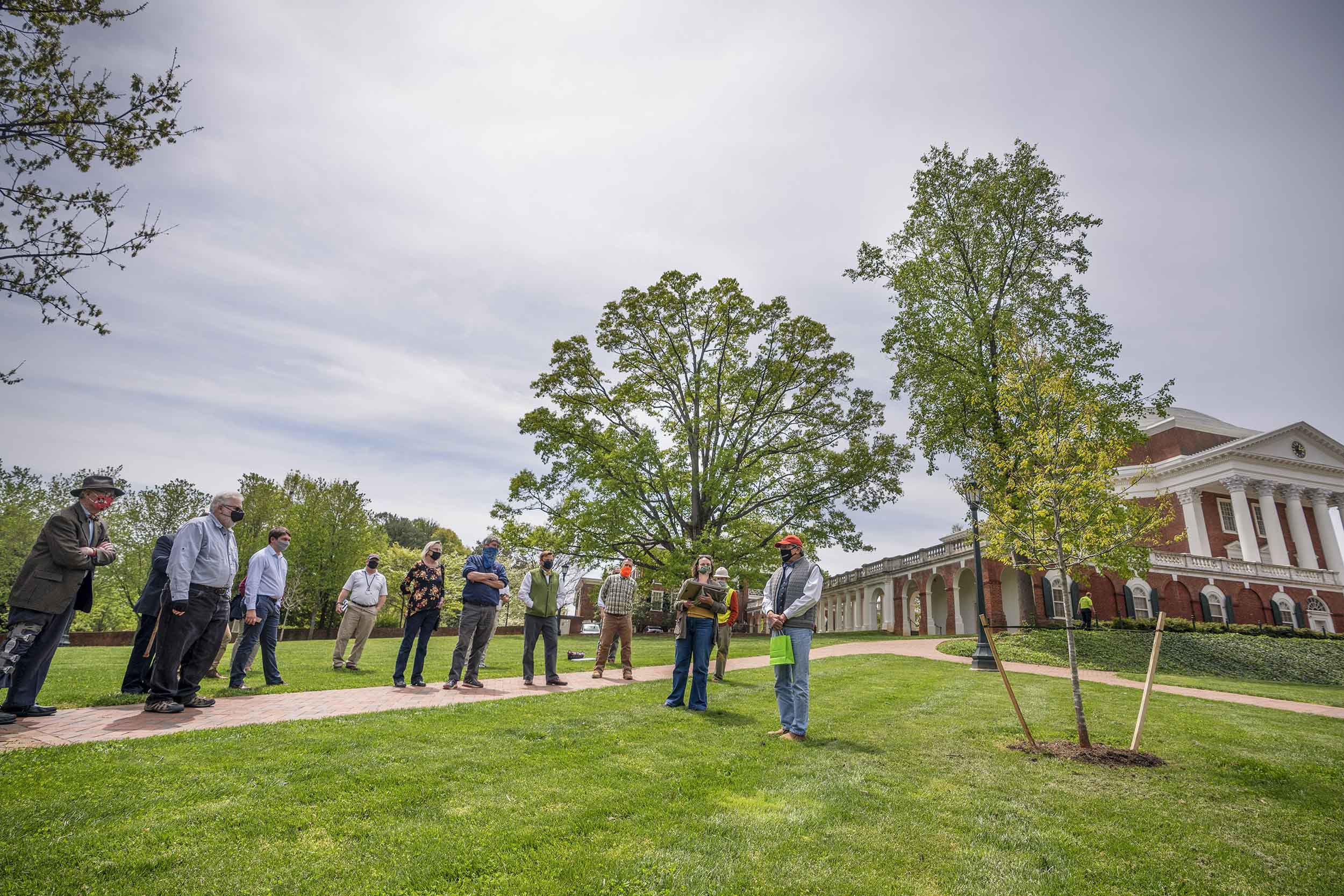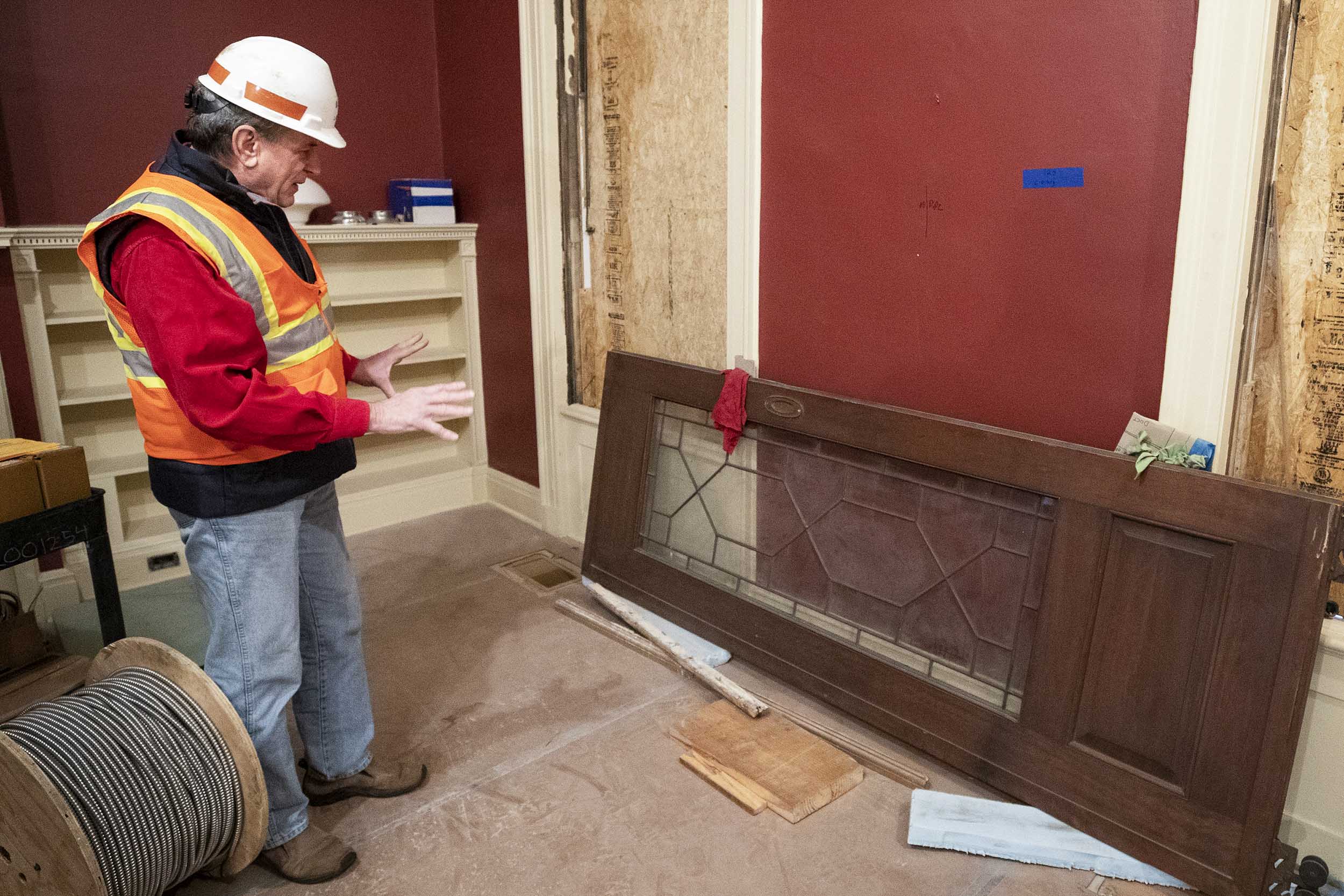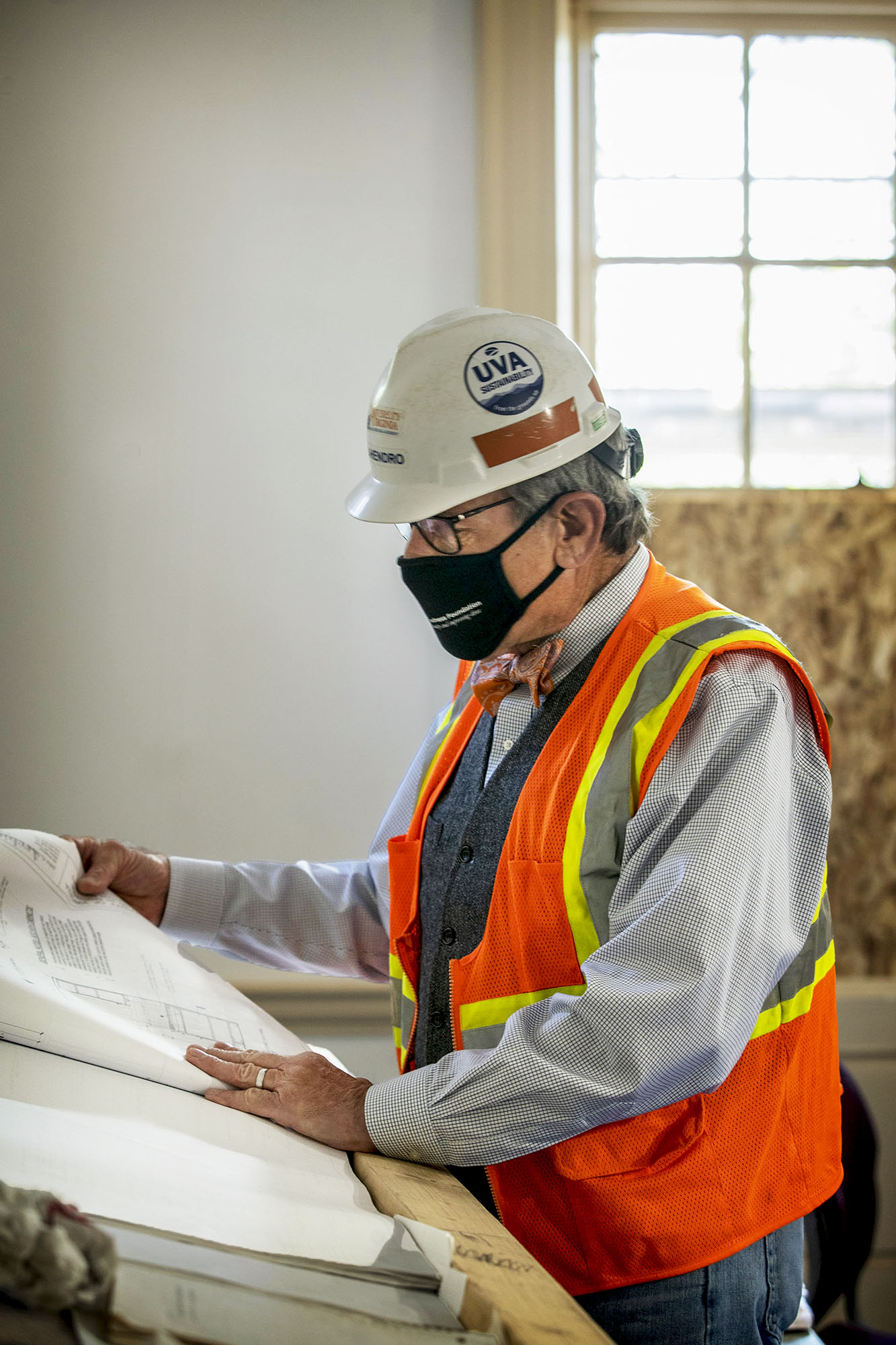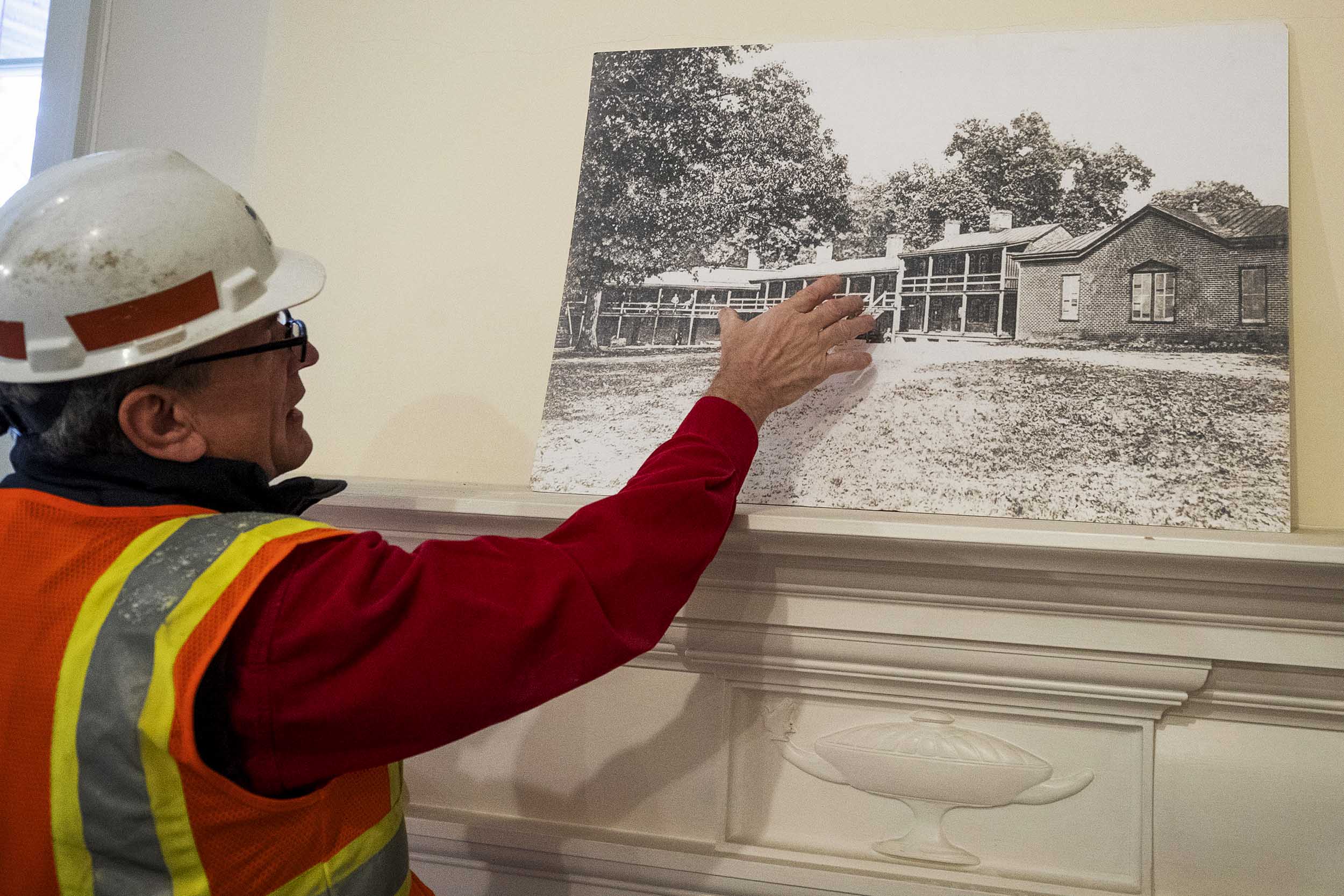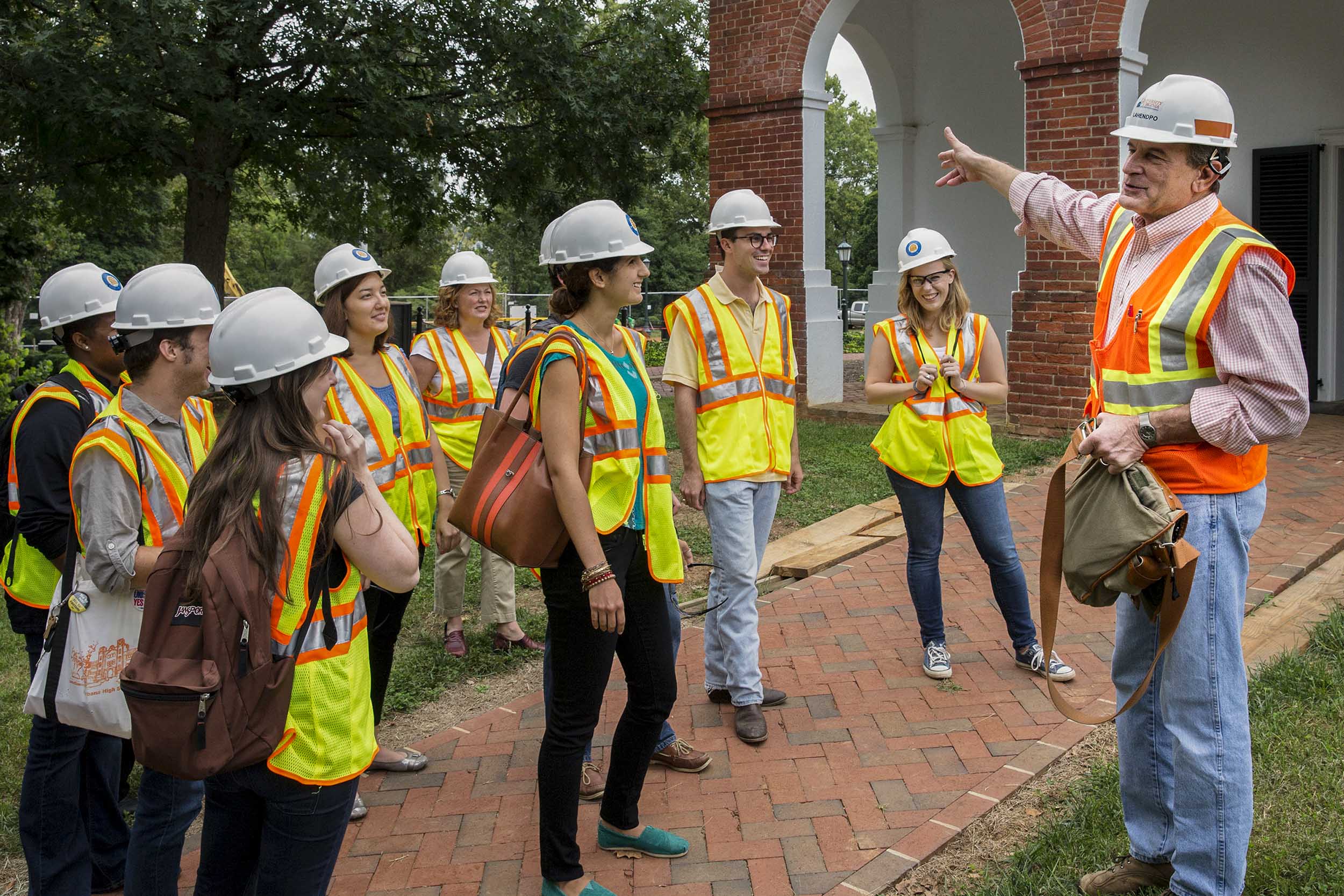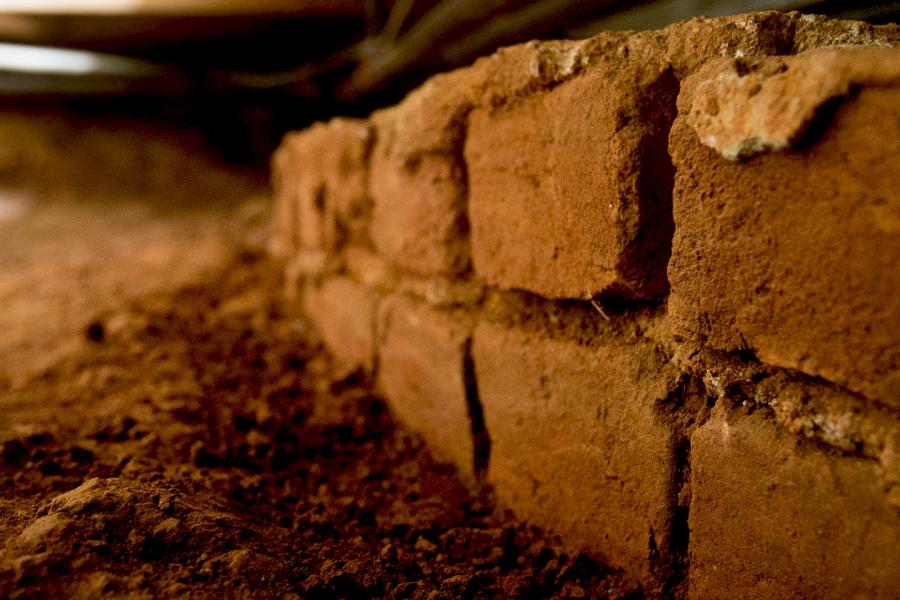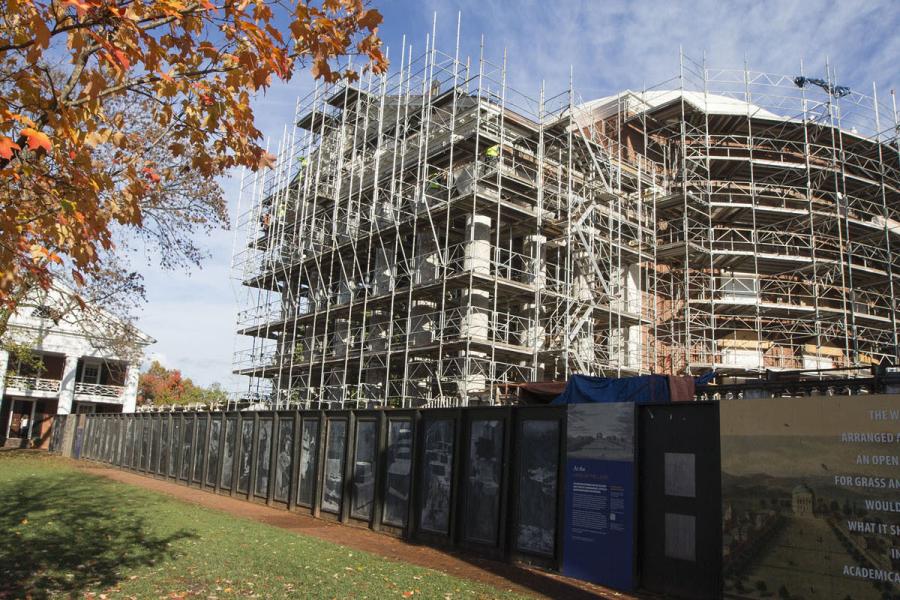“It is not just because it was the Rotunda,” Lahendro said. “The Rotunda was a special project because it was such a good collaboration – between the designers, the University staff who managed it and the Office of the Architect of the University and Facilities Management, the contractor, all the subcontractors, our Central Grounds crew that supported the work, the archeologists – everybody was working toward the same things, doing the best job we could and protecting this historic resource.”
They discovered more of the original Jeffersonian fabric of the building than they had expected.
“The building has been through one catastrophic fire that gutted it, then through a complete renovation in 1976 that gutted it again,” Lahendro said. “And we found the original chemical hearth that professor John Emmet had designed for Jefferson and proctor Arthur S. Brockenbrough. That was there and archaeology discovered the foundations for columns that were in lower-level rooms and found debris from the fire. It was just extraordinary. And there were the cisterns that were out in the courtyards from the 1840s and 1850s. It was just amazing how much we were able to find and document.”
In excavating the cistern underneath the east courtyard, archaeologists found the names of the workmen who built it carved in the parging inside, so there were names to connect to the craftsmanship. Much the same was the chemical hearth, found inside the wall of the ground level of the Rotunda, designed by Emmet, the first professor of natural sciences at the University.
“I had seen Emmet’s drawings of the hearth and the bars that formed the bottom of the fireboxes upon the top of which they would burn the wood, and seeing it right there, in place, where it hadn’t been seen for nearly 200 years – that is the immediate tangible connection to the beginning of the University and how important that building is to the development of architecture in the United States,” he said.
The Rotunda is the central focus of the Academical Village. Lahendro noted the challenge of preserving the precinct’s historic fabric, which is listed as a UNESCO World Heritage site, while maintaining its original purpose: housing students, students who now require the most modern conveniences. Accommodating those requirements without damaging the structures is “an incredible challenge,” Lahendro said.
Zehmer said Lahendro was zealous about teaching the historic preservation of the Academical Village, from presentations to students in the Architecture School to conducting tours for alumni during Reunions Weekends.
“I will always treasure working closely with Jody on the Academical Village chimney and sprinkler project in 2012,” Zehmer said. “The project involved 180 tradespeople, repaired and relined 62 chimneys, ran 1.5 miles of sprinkler pipe, and was completed in only five months. It was, area-wise, the largest construction project in the Academical Village since the University was originally constructed.”
Zehmer said Lahendro taught him not just about preserving the buildings, but also the experience of living in them through artifacts, such as the original fireplaces.
“Walking along the colonnade in winter would be much a different experience without the smell and sound of a crackling woodfire and the congenial gatherings a fire can bring,” Zehmer said. “Jody has instilled in our team the perspective that the Academical Village is not a museum, but rather a space still used for its original purpose, which sets it apart from many other historic sites. It’s a guiding principle in our preservation philosophy.”
Zehmer said he learned many lessons during the 13 years he worked with Lahendro, such as the importance of relying on team members’ expertise, asking for help, delegating when necessary and coordinating the right minds to resolve an issue or solve a problem.
“Listen before you speak, and don’t interrupt,” Zehmer cited as a lesson learned. “Just because you are the project manager, it doesn’t mean you have to know everything about the project. In the process, you will learn a lot.”
Zehmer said Lahendro included the tradespeople in the decision-making process and did not lose sight of the big picture.
“He often says, ‘Perfection is the enemy of good enough,’” Zehmer quoted. “Don’t get so bogged down in the details that you lose sight of the overall success of a project. This was a lesson that took me awhile to learn, and has only come with time and maturation.”
Herman said Lahendro works for the benefit of his client.
“Jody’s motivation is always to do what is in the best interest of the University, his team members, the City of Charlottesville, his many pro-bono clients. He is never self-serving and he puts his ego aside when it matters,” she said. “Through his mentorship of project managers and tradespeople, Jody has fostered a culture of historic preservation within Facilities Management that will continue long after he is gone. I will dearly miss his support and friendship.”
Brian Hogg, the senior historic preservation planner in the Office of the Architect for the University, agreed.
